
This season I am excited to be moving into a new role with CFI. I will spend the summer on 18 different peaks throughout the state evaluating, assessing, and inventorying the condition of their trails.
Several years back CFI’s Sustainable Trails Program was born with the objective of achieving a better understanding of the condition of the existing routes up Colorado’s fourteeners, documenting the resource damage, and monitoring the impact that increased usage is/was having on these fragile peaks, as well as creating a systematic method of rating each peak based on its condition and thus prioritizing work to be accomplished based on these conditions.
Many people have likely heard the phrase “sustainable trail” but here is a good definition of exactly what we are talking about…
“A sustainable trail should have as little impact on the surrounding environment as possible; this is done with proper planning, design, construction and maintenance. A trail built with these four elements in mind will last for generations and will blend in with the natural surroundings.” – https://ken-carylranch.org/what-is-a-sustainable-trail/
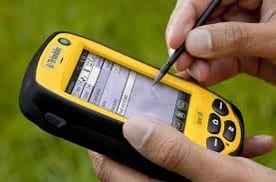
The National Park Service defines a sustainable trail as one that:
- Supports current and future use with minimal impact to the area’s natural systems.
- Produces negligible soil loss or movement while allowing vegetation to inhabit the area.
- Recognizes that pruning or removal of certain plants may be necessary for proper maintenance.
- Does not adversely affect the area’s animal life.
- Accommodates existing use while allowing only appropriate future use.
- Requires little rerouting and minimal long-term maintenance.
From the National Park Service,
Rocky Mountain Region, January 1991
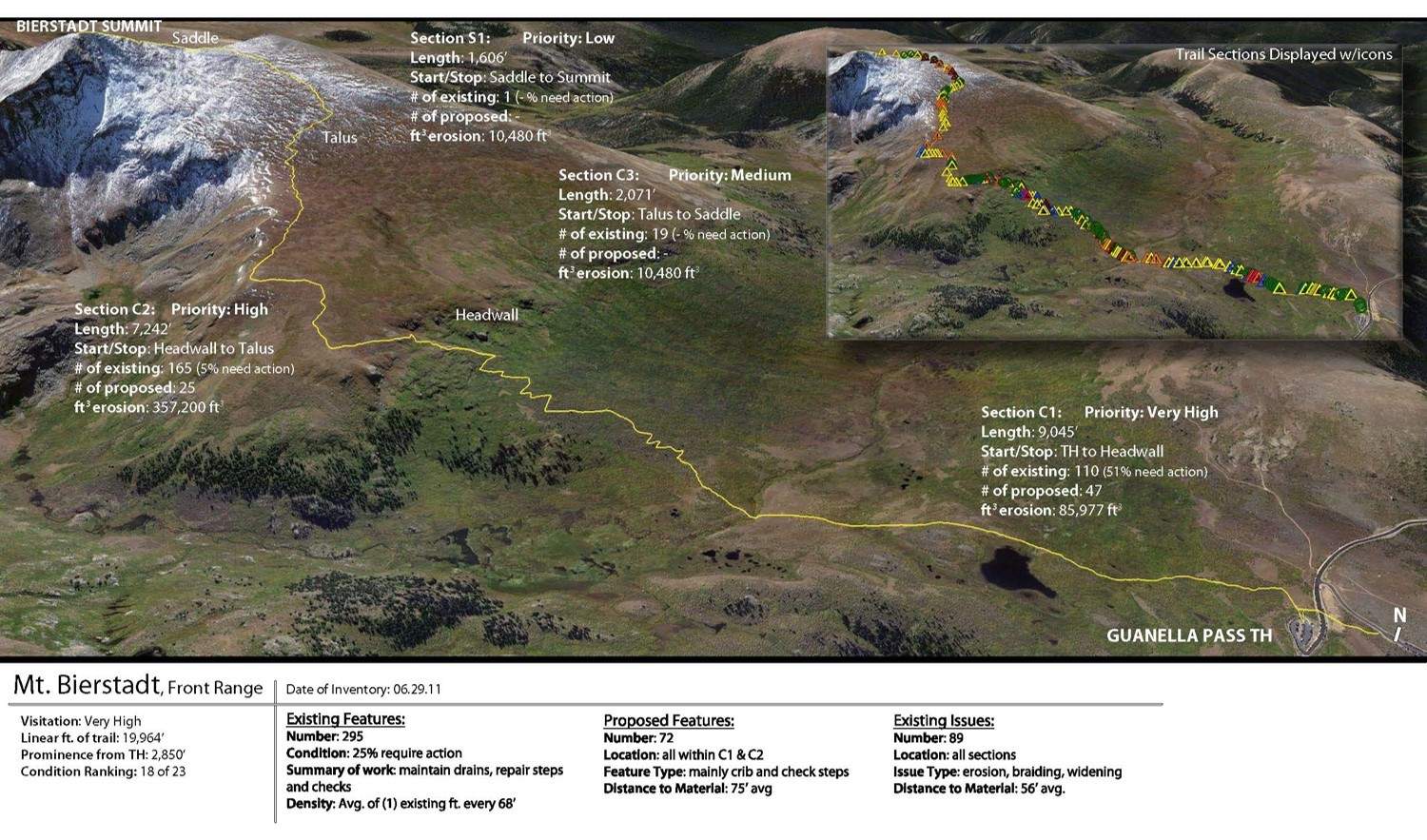
Trails that are well designed and then properly constructed are not only much more desirable for those hiking them but also have minimal erosion and require less maintenance then a poorly designed one. Hikers tend to stay on a trail with reasonable grades, well-constructed features, and one that captures their attention and interest. Whereas on non-designed or poorly designed trails users tend to create their own path often bypassing and going around failed features and badly eroded sections which further exacerbates the issues.
Unfortunately, many of the trails on Colorado’s fourteeners fall into this latter category. Reason being that most of the 14er routes were never laid out or designed by anyone that understood trail construction. Instead they were user-created routes that gained the summit by means of the quickest, most direct way possible. In doing so no consideration was given to the many factors that go into a sustainable trail. And as a result, Colorado’s high peaks have experienced immense resource damage. Many people do not even realize a quality trail is first very carefully designed, and then meticulously built. Enter CFI…
On the 14ers the single biggest threat is erosion and soil loss. As of our last assessment it is estimated that 1.3 BILLION pounds soil have washed away from the alpine. This is extremely concerning especially considering it takes around 1,000 years for one inch of soil to accumulate in the alpine! Not sustainable.
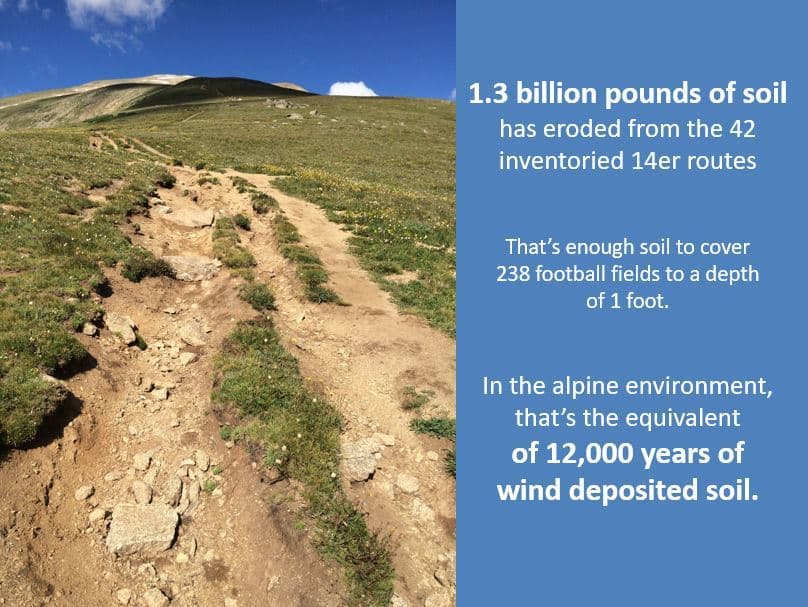
With more than 20,000 GPS-based data points, Colorado Fourteeners Initiative generated Fourteener Report Cards for each peak (where data has been collected) as well as a statewide version comparing all of the peaks side by side (again, including only those where data has been collected). See the link below!
https://www.14ers.org/stay-informed/colorado-14ers-statewide-report-card/
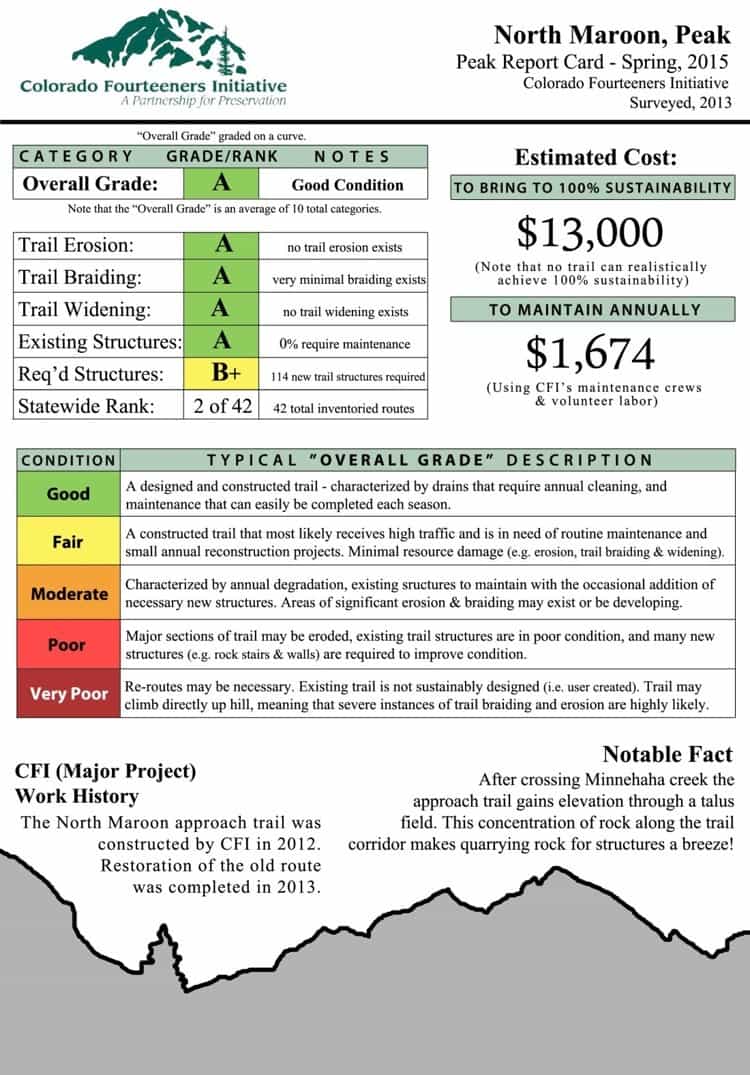
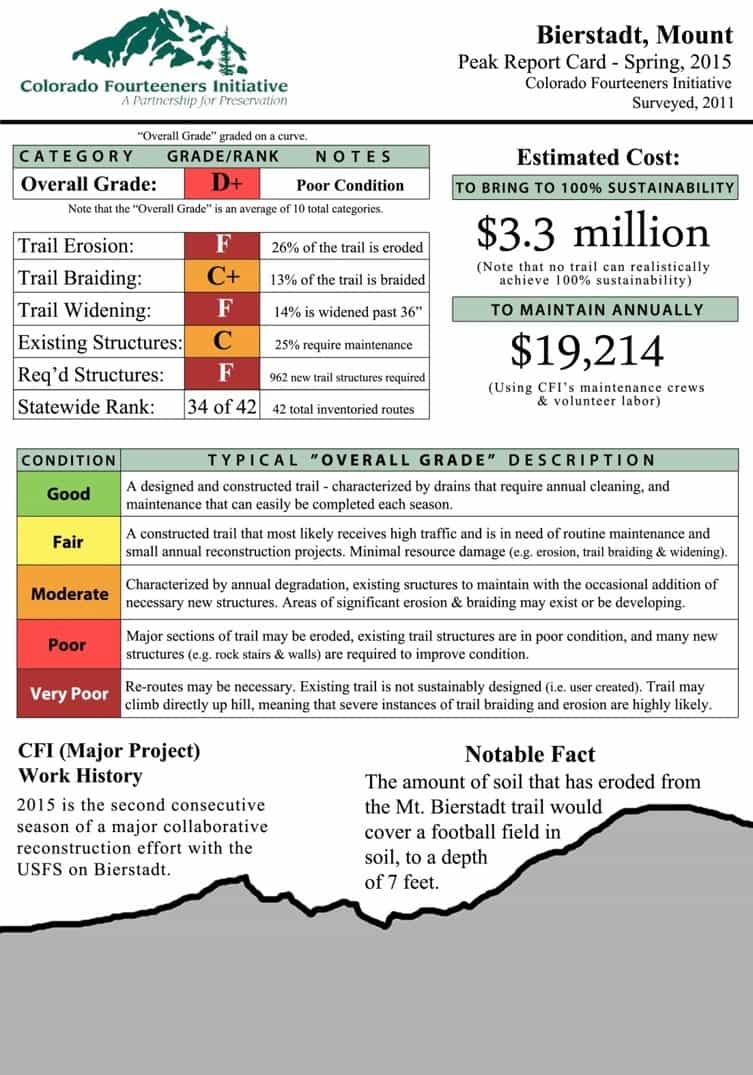
With the data that I will be collecting in the field this summer CFI will continue to be actively monitoring, protecting, and preserving our delicate peaks. To date CFI has constructed 31 sustainable routes on more than 28 different peaks, with two more currently underway! The ultimate goal is one sustainable route up each of the fourteeners. Here’s another good article on sustainable trails if you want more: http://www.americantrails.org/resources/trailbuilding/Favro-sustainable-trail-design.html
A big thank you goes out to Compass Tools, Inc. for supporting this project through in-kind donations of time, knowledge, and products!


